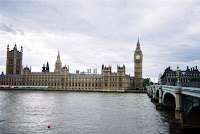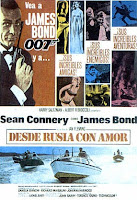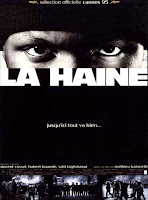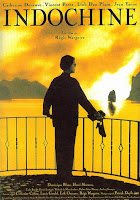 Formal casino gambling has its roots on the European continent. The institution that we call the "casino" had its origins in the 17th and 18th centuries. Governments gave concessions to private entrepreneurs to operate buildings in which games could be legally played in exchange for a part of the revenues secured by the entrepreneurs. Whereas from time immemorial, players had competed against one another in all sorts of private games, here games were initially structured to pit the player against the casino operators--"the house." These gambling halls were designed to offer playing opportunities to an elite class in an atmosphere that allowed them to enjoy relaxation among their peers.
Formal casino gambling has its roots on the European continent. The institution that we call the "casino" had its origins in the 17th and 18th centuries. Governments gave concessions to private entrepreneurs to operate buildings in which games could be legally played in exchange for a part of the revenues secured by the entrepreneurs. Whereas from time immemorial, players had competed against one another in all sorts of private games, here games were initially structured to pit the player against the casino operators--"the house." These gambling halls were designed to offer playing opportunities to an elite class in an atmosphere that allowed them to enjoy relaxation among their peers.The 21st century seems to have brought us a strong movement that is pushing for the expansion of gambling everywhere--all around the globe. Given that casino gambling has European origins, it is somewhat ironic that those pushing gambling now almost totally overlook the traditional manner in which casinos have operated over the past three centuries in Europe. Promoters of new casino gambling, including British and European politicians, are quite willing to scrap the European "model" in favor of the "modern model" of casinos found in Las Vegas and other American jurisdictions. Almost everywhere the slot machine is the pervasive form of gambling. Now machines are found in urban and seaside parlors, recreational arcades, and in pubs, bars, taverns and restaurants worldwide. Major moves are being made in parliaments of Japan and the United Kingdom to have Las Vegas style casinos in several locations from Tokyo to Osaka, England and Wales to Scotland.
Before we bury the idea of "The European Casino," we should reflect upon its attributes. Perhaps political leaders who are enthralled with the idea of merely using large open casinos as vehicles for gaining maximum revenues for governments, could reflect on virtues of a different style of operations. Maybe policy makers in my home jurisdiction, Las Vegas, Nevada, could reflect on these virtues as well.
In 1986, I visited the casino that operates within the Kurhaus in Wiesbaden, Germany. The casino manager was describing a new casino that had opened in an industrial city a few hours away. With a stiff demeanor he said, "They allow men to come in without ties, they have rows and rows of noisy slot machines, they serve food and drinks at the tables, and they are always so crowded with loud players; it is so awful." Then with a little smile on his face, he added, "Oh, I wish we could be like that."
Actually, the rival casino to which the Wiesbaden manager was referring, the casino at Hohensyburg near Dortmund, was really just a bigger casino, where a separate slot machine room was within the main building as opposed to being in another building altogether. Men usually had to wear ties, but the dress code was relaxed on weekends, and the facility had a nightclub, again in a separate area. It was crowded simply because it was the only casino near a large city, and the local state government didn't enforce a rule against local residents entering the facility.
The traditional casinos of Europe were not as large as those in Las Vegas. They largest may have hundreds of machines not thousands. Typically they would have fewer than fifty. Twenty tables would be found in a large casino. The largest casinos such as those in Madrid, Saint Vincent, Italy, and Monte Carlo had playing floors smaller than the ones found on American river boats casinos. Revenues were but a fraction of revenues found in American casinos. The largest casinos produced gaming wins similar to those of average or small river boat casinos.
Most traditional European casinos were local monopolies. Governments had vital roles in some facet of the operation. Some governments owned and operated the casinos. Some owned the building housing the casino. Where the casino was a private operation, it might as well have been a government corporation. Taxes were so high that the government was the greatest financial beneficiary from the operations. For example, casinos in Germany pay a rate on their gross wins as high as 80%. In France the tax rate were on a sliding scale up to 80%, in Austria taxes took 60% of the revenues, in Spain 54%. Nowhere were tax rates below the typical 20%-30% rates in U.S. jurisdictions (the Nevada rate is less than 7%).
Still, given the size of the operations, nowhere do governments heavily rely on the taxes for budgetary reasons.
The traditional casinos restricted patron access. First, many would not allow local residents to gamble. Second, all required identification and all registered patron attendance. Third, they enforced dress codes. Fourth, they permitted players to ban themselves from entering the casinos if they worried about compulsive gambling behaviors. The casinos allowed families to ban individuals from gambling. The casinos themselves would bar compulsive gamblers. Fifth, the casinos had limited hours of operation, usually evening hours. Sixth, the casinos did not advertise. Seventh, credit policies were restrictive. Checks were not cashed. Eighth, alcoholic beverages were restricted. Ninth, complimentaries--drinks, meals, hotel accommodations were rare.
The clientele of the Traditional European casino were from the local region. The casinos did not rely upon international visitors (Monte Carlo being one exception). Very few had facilities for overnight visitors. The casinos featured table games, and where slot machines were permitted, they were found in separate rooms or even separate buildings. The employees at the casinos spent entire careers at one casino. The employees were almost always local nationals. The advent of the European Union has affected that pattern.
The casinos of Europe have traditionally adopted what would be called a "player protection" model of operation. The gamblers are local area elites (some of the casinos do ban residents of the local town), and therefore what happens to them during their casino "experience" becomes known to most patrons. The casino would show a care to these players that is well reflected in the statement: "Treat a sheep well, and he gives you wool forever; skin a sheep and you never get anything from him again."
The casinos also follow a community responsibility model. Casinos receive their licenses or concessions for a number of years based upon competitive bidding. The bids include a list of promised obligations toward the community. Casinos agree to finance public parks surrounding their properties, some have art museums for the community, others historical displays. Some financed other community buildings, including church buildings. Several won their licenses with a promise that they would revitalize an historical building that was scheduled for demolition. The casinos offered concert series to town residents. Bands and orchestras played outside the facilities, not inside like in Las Vegas. They did not play in order to entice players to enter their doors, but rather to improve the quality of life in the towns.
I write about the European casinos in the past tense, because it was 1986 and 1987 when I toured 140 of the facilities. Since that time I have occasionally visited some of the casinos. I do recognize desires to change, but I wonder about what is being sacrificed with the embracing of the "Las Vegas style" as the one dominant model to be emulated. During my tour, I constantly asked about crime, prostitution, and other social maladies considered to be related to casinos in America. Most of the time, the response was an incredulous, "What is it you are asking about?" "We know nothing of these problems." The responses came from casino operators, government regulators, players, and citizens in general.
The Traditional European casinos have had a style that would be welcomed by many North American patrons. However, in achieving that style, the casinos must forfeit what most entrepreneurs, governments and citizens want from casinos--large profits, many jobs, economic development, and tax generation that could support many government programs. Those things do not come with the "player protection" and "community responsibility" model of casinos found in Europe.
...by Dr. William N. Thompson

























